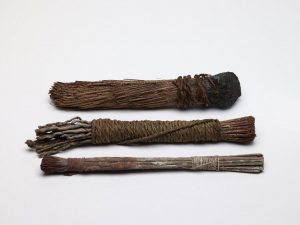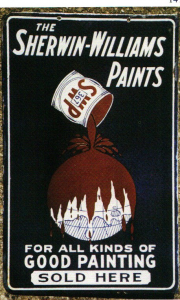When you’re looking for exterior or interior house paint, the sheer number of available hues and shades make it easy to find exactly what you’re looking for. In the hunt for that perfect combination of colors needed to highlight the features of your home, many people forget to consider the fact that the practice of painting a home has been around for ages. Evidence shows that early humans applied paint to stone and other surfaces in order to brighten up their living spaces - this practice goes as far back as 40 thousand years.
These “eco-friendly” paints usually consisted of ingredients found in the environment. Ingredients like soot, tree sap, colored clap, and organic by-products combined with fatty oils and blood from animals. We decided to delve into the “colorful” history of house paint.
 1200s - 1500s
1200s - 1500s
Artisans have been commissioned to paint houses since the 11th century. The evidence points to house painting as a trade beginning in the 1200s. However, by the 14th century house painter guilders began popping up in England. These guilds set specific standards for house painting and were able to establish the house painting field as a respected profession. Guilds and their members treated mixing techniques for creating colors and skills as secrets to be closely guarded, in hopes of protecting their livelihood.
Colonial America
During colonial times, Pilgrims typically avoided painting their homes because they viewed the practice as a demonstration of vanity, a display of wealth and arrogance. In 1630, a Charlestown preacher even faced criminal charge of sacrilege after painting the interior of his home. Despite this - the demand for interior house paint kept growing.
During colonial America, the base material of paint were oil and water. This was combined with an array of other materials like iron, copper, berries, fruits, lead and other ingredients to create various different colors and types of paint. The vast options provided homeowners with the paint they needed for their walls and ceilings. Painters used brushes with wooden handles, made from a variety of hairs. Unfortunately, the industry still faced some issues - mainly the fact that the thickness of the paint made application difficult and often resulted in uneven coats. 1700s - 1880s
1700s - 1880s
In the 1700s, Marshal Smith’s “Machine for the Grinding of Colors” fueled research aimed at discovering the best methods for grinding pigment materials effectively and manufacturing paint in mills. By the 1800’s, ingredients like linseed oil became the preferred agent for binding - it cost less and protected wood that was being painted. In 1866, Harry Sherwin, Alanson Osborn and Edward Williams founded the Sherwin, Williams & Co of Cleveland, Ohio. They were the first company to produce ready-to-use house paint. It would be much later that Sherwin-Williams developed the re-sealable tin can.
20th Century
In 1833, Benjamine Moore opened it’s doors. This would come a few decades behind its current most notable competitor, Sheriwn-Williams. Throughout the 1900s, Benjamin Moor invested a massive amount of resources into researching and developing chemicals designed to improve paint mixing. In 1982, the paint company designed the computer based color matching system, which is now an indispensable tool when it comes to paint color selection.
Now, there are thousands of paint colors to choose from to help increase the curb appeal of your home, and to create the personality and style you desire in your homes exterior. Whether you’re looking for a residential or commercial painting contractor, Lighthouse Painting is here to help! It’s important that you find an exterior painter that brings knowledge, experience and reliability to the table. Contact us today for a FREE, no obligation consultation for your next painting project!

